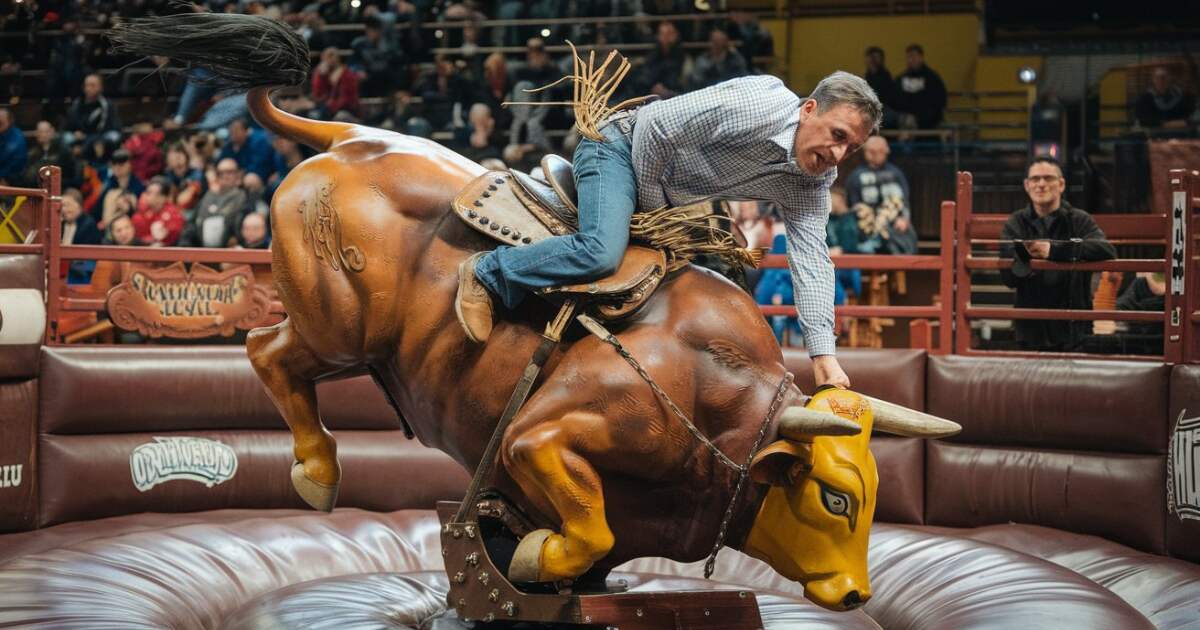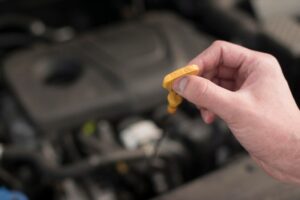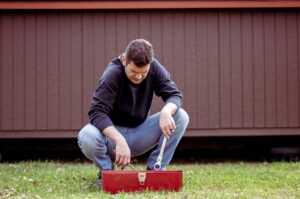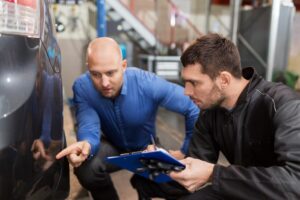Mechanical bull riding has become a popular entertainment activity at various events, from local fairs to private parties. This thrilling experience, which simulates the challenge of riding a real bull, is known for providing both excitement and fun for people of all skill levels.
The attraction requires a blend of skill, balance, and timing to stay on the bull as it bucks and spins. In this article, we’ll explore the world of mechanical bull riding, including riding techniques, safety guidelines, and tips for hosting events with mechanical bulls.
Understanding Mechanical Bulls
Mechanical bulls are designed to replicate the unpredictable movements of a real bull. Controlled by an operator, these bulls can rotate and shift in multiple directions, making them a challenge to ride.
The bull is mounted on a motorized base, and riders must grip a rope handle to maintain their position. The level of difficulty can be adjusted based on the rider’s experience, making the ride accessible to beginners and exciting for experts alike.
A Brief History of Mechanical Bulls
Mechanical bulls were initially created as training devices for rodeo riders in the 1930s. Their primary purpose was to help cowboys practice balance, reflexes, and bull-riding techniques without the danger of being thrown by a real bull.
However, mechanical bulls became widely popular in the mainstream after the movie Urban Cowboy in 1980, where mechanical bull riding was featured prominently. Since then, they have become a fixture at parties, bars, and events.
Key Features of Modern Mechanical Bulls
Safety Features
- Padded main body
- Thick foam flooring
- Emergency stop button
- Variable speed controls
- Cushioned landing area
- Safety operator supervision
Technical Specifications
- Programmable movements
- Adjustable speed settings
- 360-degree rotation capability
- Electronic control panel
- Durable steel frame construction
- Professional-grade padding
How to Ride a Mechanical Bull: Key Techniques
Mechanical bull riding requires more than just holding on tight; it’s about balance, posture, and timing. Whether you’re a beginner or an advanced rider, the following tips will improve your chances of success:
- Perfect Your Grip: Use your dominant hand to hold the rope handle, and keep your arm slightly bent. This gives you flexibility to move with the bull’s motions.
- Balance Your Weight: Sit in the middle of the bull and squeeze your knees against its sides. Proper weight distribution will help you stay centered.
- Move With the Bull: Stay loose and relaxed, following the bull’s movements. Use your core to maintain balance, especially when the bull changes direction or speed.
- Avoid Common Mistakes: Many riders make the mistake of leaning too far forward or stiffening their arms. Keep your body flexible and let your hips move naturally with the bull’s movements.
Professional Mechanical Bull Riding Tips
Advanced Techniques
- Balance training
- Core strengthening exercises
- Timing practice
- Movement prediction
- Professional grip techniques
Competition Preparation
- Physical conditioning
- Mental preparation
- Practice routines
- Competition rules
- Scoring systems
Safety Considerations for Mechanical Bull Riding
Although mechanical bull riding is generally safe when supervised, there are still important safety guidelines to follow. Riders should always listen to the instructions provided by the operator.
Wearing proper attire—such as fitted clothing and closed-toe shoes—helps avoid accidents caused by loose items. Always ensure the operator has full control of the bull and that the area around the bull is padded and spacious enough for a safe landing.
For event organizers, it’s important to check that all safety measures are in place. Mechanical bulls should come with proper padding and professional operators to guide the participants. Event planners should ensure that waivers are signed, and safety briefings are provided before rides.
Hosting a Mechanical Bull Event
Mechanical bulls are a great addition to any event, whether it’s a corporate function, birthday party, or themed celebration. When planning an event, organizers should consider several key factors:
- Space Requirements: Mechanical bulls need at least a 20-foot by 20-foot area for setup, including enough room for the bull and the surrounding mats.
- Power Source: Ensure that there is adequate access to power to operate the motorized bull.
- Insurance: Liability insurance is often required for mechanical bull rentals, and participants may be required to sign waivers.
- Professional Operator: Having a trained operator is essential for safety. They can control the speed and movements based on the rider’s skill level and stop the ride immediately if necessary.
Renting a Mechanical Bull: What to Know
Renting a mechanical bull for an event requires some planning. Most rentals include a professional operator, safety mats, and transportation to the event site. Depending on the rental company, insurance coverage and waivers may also be required to ensure rider safety and legal compliance.
It’s important to book in advance and verify that there is enough space for setup, which typically requires a minimum of 20′ x 20′ of clear area.
Costs for renting a mechanical bull can vary based on the duration and location. Hourly rates generally range from $200 to $400, while half-day and full-day rentals cost between $500 and $1,500.
Event packages may also be available, offering discounts for extended rental periods or additional services like music, lighting, and extra entertainment options.
Average Costs
- Hourly rates: $200-$400
- Half-day rentals: $500-$800
- Full-day rentals: $800-$1,500
- Event packages: Custom pricing
Popular Mechanical Bull Songs and Music
Country Music Playlist
- Traditional rodeo songs
- Modern country hits
- Western classics
- Event music suggestions
- Including Zach Bryan selections
Frequently Asked Questions
Are mechanical bulls safe?
Mechanical bulls can be safe if properly maintained and operated. Safety measures include using a padded area, wearing protective gear, and having trained operators.
How long does a typical ride last?
Most rides last between 30 seconds to 2 minutes, depending on the rider’s skill level and the operator’s settings.
What should I wear when riding?
Comfortable, fitted clothing that allows movement. Avoid loose items, and wear closed-toe shoes.
Can anyone ride a mechanical bull?
Most healthy adults can ride, but riders should be aware of any physical limitations and consult with the operator about appropriate settings.
How much space is needed for setup?
A typical setup requires at least 20′ x 20′ of clear space, including the landing area.
What age is appropriate for riding?
Children as young as 5 years old can ride mechanical bulls, but it’s best to check the specific rules of the venue. Riders should be at least 48 inches tall and supervised by an adult.
How long does setup take?
Setup for a mechanical bull typically takes about 1 to 2 hours. This includes assembling the bull, placing safety mats, and ensuring everything is functioning properly.
What safety measures are in place?
Safety measures for mechanical bulls include padded floors, safety harnesses, trained operators, weight limits for riders, and clear instructions. Regular maintenance checks also help ensure safe operation.
What’s included in rental packages?
Rental packages for mechanical bulls usually include the bull itself, safety mats, a trained operator, setup and takedown services, and sometimes additional equipment like helmets. Some packages may also offer liability insurance and a specified rental duration.
Conclusion
Mechanical bull riding offers an exciting blend of challenge, entertainment, and physical activity. Whether you’re planning an event or trying it for the first time, understanding these basics will help ensure a safe and enjoyable experience.











